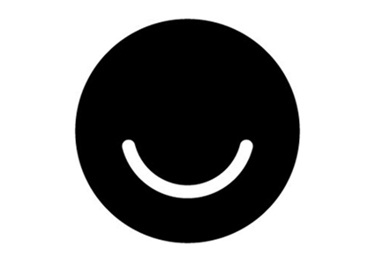Many businesses concentrate their social media marketing on the three most-used platforms: Twitter, Facebook, and LinkedIn.
However, if you're one of those businesses, you may be missing some tricks by not harnessing the potential of other social networks.
This article will highlight five alternative options that may help to support your marketing strategy.
1. Tumblr

Often, brands dismiss blogging site Tumblr for not being corporate enough, or being under the radar. But it now contains 217 million blogs and 99 billion posts. The network is most popular with 18-29-year-olds, with 66% of all visitors under the age of 35, and 39% under age 25, as of a year ago; and, among 13-25-year-olds, Tumblr is more popular than Facebook.
If brands are to be successful on this platform, they need to understand their audience, including the language that audience uses. Understanding one's audience is a marketing strategy that has been around for many decades, yet it is often forgotten when creating social updates. Tumblr has a cool edge to it that Facebook and Twitter shook off years ago, so do your research before you create a blog for your business on Tumblr. When attempting to mimic your audience's language—be engaging, not offensive.
As for Tumblr's functionality, you can post literally any form of media you want—from plain text to audio, video, and photos. If you write something compelling for your followers, they may repurpose it or reference it in their own Tumblr blog, increasing the longevity of the post and the engagement with it, thus making it both a content marketing tool and a listening and interaction tool.
It's also an abundant resource for inspiration for brands as well as potential leads, particularly if your offering is niche or suited to the youth market. The site is versatile: In all, there are seven different post types to explore, including chat functionality.
2. Instagram

Up until fairly recently, the adoption of photo-sharing network Instagram by businesses was limited. In the UK, in September 2014 (and a year earlier in the US), the game changed when Instagram announced that sponsored posts would be displayed on users' feeds.
The ads are clearly labeled to state that they are paid for, but they are broadly intended to blend in and appear natural among users' posts. I, for one, already follow brand updates on Instagram, and I see no issue provided that the ads are appropriate.
For organic business posts, Instagram is a useful platform for sharing your company's culture, employees, and quirks, together with branding and product updates.
The prominent use of hashtags means that you can also run competitions and contests that utilize memorable visual elements, perhaps reaching out for examples of how your clients use your products. Such grassroots-style initiatives are playful and low-cost, and the level of engagement is also easy to track.
In addition, the site can integrate short-form video content for quick and snappy business updates that don't require the high-quality resolution and finish that YouTube calls for.
If you are looking for an example of how an iconic, traditional brand uses this platform effectively, check out the Liberty London account. The department store, the subject of a Channel 4 documentary, is going through a digital transformation. The account has almost 165,000 followers, and its clean, crisp, and professional shots are all taken by in-store staff, thus increasing advocacy internally and portraying an authentic representation of the company's image.
3. Pinterest

Pinterest—another service that focuses on imagery—is perhaps a surprising success. No longer just the fodder of brides-to-be and home-interior enthusiasts, the platform that allows you to "pin" notice boards that match your interests boasts over 70 million active users who have posted over 30 billion pins.
The site is used predominately by women: 80% of users are women. Yet when you consider that 85% of women make household purchasing decisions, Pinterest seems like an excellent marketing opportunity for organizations to promote visually stimulating products.
As part of the recent Social Media London events the organizers produced (aptly) an infographic on how to the 500,000 active business accounts are capitalizing on the power of Pinterest. One of the most interesting points is that whenever an image is posted, it automatically includes a link back to the source of the image, generating more referral traffic than YouTube, Google+, and LinkedIn combined.
If social media were compared with that purchasing cycle, Instagram would be for informing your prospects, whereas Pinterest would for pinning them down!
4. Google+

You've probably heard the rumblings in the marketing community that Google+ is dead. The network, which launched back in 2011, is both a social tool and an identity service, linking in webmaster and location services. The latter has meant that the site is deemed to directly benefit websites' search rankings. In 2013, inbound marketing software service Moz carried out a correlation survey; it found that sharing content on Google+ can influence your search rankings, inter alia as follows:
- Google uses Google+ to discover new content, and crawls and indexes it very quickly.
- Its database allows the Web address of the company to be fully accessible as a "follow" link, something Facebook posts don't do.
- It attracts natural links to your site.
The main reason Google+ has received such bad press is that it hasn't been widely adopted; then, following a reshuffle, Google's strategic priority seemed to shift to Android, its global mobile operating system. There is hope, however, that G+ will be used not only for SEO purposes but also for content. Back in May 2014, Google+ released its secret weapon: Stories and Movies. As described in the official launch blog post, it's certainly a great premise:
No more sifting through photos for your best shots, racking your brain for the sights you saw, or letting your videos collect virtual dust. We'll just gift you a story after you get home. This way you can relive your favorite moments, share them with others, and remember why you traveled in the first place.
I know where I'll be sharing my photos after I get back from my holiday later this month. Perhaps Google+ is about to be reborn.
5. Ello

"You are not a product" is the concluding line of the Ello manifesto. Its tagline is "Simple, beautiful and ad-free." Still in Beta, Ello is a social tool with a difference. Whether it remains true to its manifesto in the years to follow remains uncertain. Designed by a small group of creatives, it was originally intended to be a private network. Now that the idea is gaining traction and significant investment, it has been opened up; access can now be requested by email invitation.
So where is the opportunity for business? The Harvard Business Review published an excellent piece on the rise of Ello, suggesting that this shift in networking tools provides a wake-up call for companies to rethink how they use the social Web.
Ello's founders want to create an environment not controlled by data, profits, and automated manipulation; rather, they intend it to be "a place to connect, create and celebrate what we can do together."
Accordingly, Ello could be a unique opportunity to forge a new kind of relationship with your customer base, writes HBR: "Just because advertisers are unwelcome on some parts of the social web, that doesn't mean businesses are necessarily unwelcome, though: consumers simply want businesses to engage with them in some way that goes beyond a pitch."
In summary, Ello has the promise to be a conversational platform not run by conglomerates or shareholders; and if its manifesto's premise endures, it could lead to your having the most meaningful conversations possible today with your customers and prospects online.
Logging Off
Myriad tools are available to businesses. Finding the right fit can be a bit of a minefield. Sometimes the less obvious choice may generate a greater ROI than the most obvious, even if it takes slightly longer to acclimate to it.




